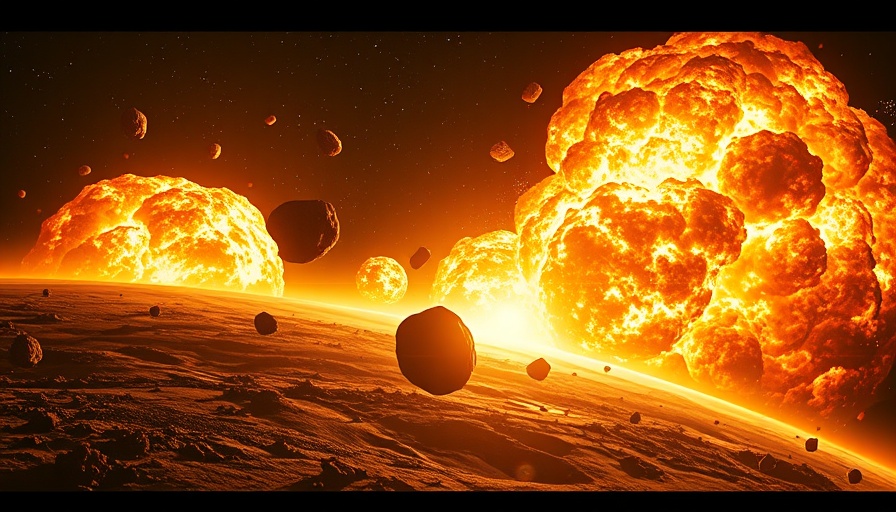
A Race Against Time: The Need for Anticipatory Defense
The threat of an asteroid strike is not just a distant fear. Recent simulations have reignited discussions around planetary defense strategies, specifically the potential use of nuclear devices to avert catastrophic impacts. During a high-stakes summit, global leaders and scientists convened to assess how to prevent a massive asteroid heading for Earth. The simulation underscored the importance of immediate action and accurate technology, especially as current detection capabilities struggle to keep track of all significant near-Earth objects.
Understanding the Threat of Planet-Killer Asteroids
Asteroids larger than 140 meters pose a serious risk, with the potential to unleash catastrophic regional destruction. The infamous Chicxulub impact, which wiped out the dinosaurs, serves as a stark reminder of the devastation that can occur. According to experts, if a 10-kilometer asteroid were to hit Earth today, it could set off wildfires, tsunamis, and violent geological upheavals, threatening nearly all forms of life. NASA and European space agencies have been working tirelessly to improve detection methods, yet, researchers warn, many large threats remain undetected until it's too late.
Nuclear Solutions: A Double-Edged Sword
While using nuclear weapons for planetary defense remains controversial, many experts agree that it could be the most viable option when faced with an imminent threat. New research from Lawrence Livermore National Laboratory highlights the feasibility of using nuclear devices to deflect or disrupt asteroid trajectories. The approach involves strategically detonating a nuclear device at a safe distance, thus using energy to nudge the asteroid off course without fragmenting it. This method promises a potentially effective means to alter an asteroid's path, but scientists caution it is untested.
Bridging Science and Policy: The Legal Dilemma
Beyond the technical challenges, employing nuclear technology for asteroid mitigation brings forth significant legal and political implications. Existing international treaties such as the Limited Test Ban Treaty and the Outer Space Treaty restrict the use of nuclear weapons in space, complicating efforts to create a comprehensive planetary defense strategy. Many experts argue for modifying these treaties to allow for nuclear responses to immediate cosmic threats, emphasizing the need for global consensus in addressing this existential risk.
Looking Ahead: Strategies for Planetary Resilience
The race to design and deploy effective planetary defense mechanisms is critical. The recent summit illustrates that knowledge and preparation can converge to save lives. As scientists refine simulation models and explore nuclear possibilities, policymakers must grapple with the legal ramifications and public perception. While the prospect of using nuclear weapons might evoke trepidation, it is essential to prioritize Earth’s safety, creating frameworks that enable prompt and decisive actions in the face of impending asteroid threats.
As awareness of the asteroid risk grows, everyone must engage in ongoing discussions about how best to protect our planet. From rallying public support to fostering collaborations among nations, the journey towards a secure future involves each one of us.
 Add Row
Add Row  Add
Add 




Write A Comment